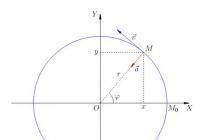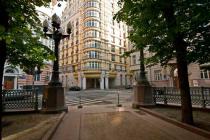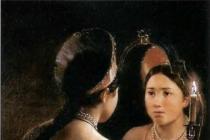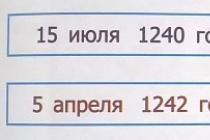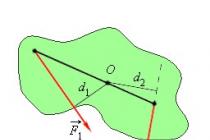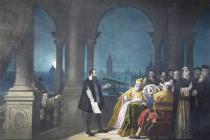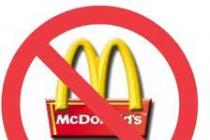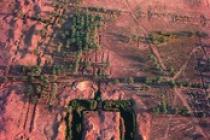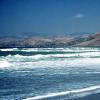1. According to the method of mixing gas with air, burners are divided into three groups:
Burners without preliminary mixing of gas with air, gas and air are supplied to the furnace (combustion zone) separately - diffusion burners.
· Gas burners in which there is a partial mixing of gas with air. In these burners, gas with air is mixed both in the burner and in the working space of the furnace, this happens simultaneously with the combustion process - low pressure injection burners.
· Full mixing burners, inside of which gas and air are mixed, i.e. preliminary processing of the gas-air mixture before it leaves the burner into the combustion zone - medium pressure injection and mixing burners.
2. By device:
· Diffusion;
· Injection;
· Mixing;
· Combined.
3. By pressure:
· Low pressure (gas up to 500 mm of water column, air up to 100 mm of water column);
Medium pressure (gas 500-15000 mm w.st., air 100-300 mm w.st.)
4. Depending on the outflow of the gas-air mixture:
· Single-flare- in which the mixture comes out through one hole;
· Multi-flare- the mixture comes out through a large number of holes.
Diffusion burners
In diffusion burners (atmospheric), gas and air enter the furnace separately and mixture formation occurs due to diffusion (slow penetration of one substance into another) when they touch. They represent a pipe segment with a diameter of 50-70 mm plugged at the end, near which two rows of holes are drilled in a checkerboard pattern with a diameter of 0.5-3 mm, with a distance (step) of 4-16 the diameter of the holes. The rows of holes are located at an angle of 60-120 °. The number of holes depends on the line capacity.
Air enters the furnace from the surrounding space due to the vacuum created by the chimney and the injecting action of the gas jet. Gas enters the burner under pressure, exits through the burner holes into the furnace, mixes with the ambient air and burns out in the form of separate small torches. With a small heat load, the gas streams suck in air from all sides and, mixing with it, quickly burn out with a blue-blue glowing flame. Such a burner can operate at a gas pressure of 30-120 mm Hg. with TO(excess air ratio) 1.2-1.6.
The productivity of the burners is 1-10 m 3 / h, there is up to 100 m 3 / h, but this is not profitable. The burners can also operate at an average gas pressure of up to 3000 mm.w.
Diffusion burners are simple in design, have small dimensions, are easy to maintain, have a stable flame under variable loads, are easy to regulate by changing the gas supply, and exclude flame breakthrough.
Diffuse combustion- This is combustion in which there is no preliminary mixing of gas with air. This combustion is fairly stable under the following conditions:
1. If the flow rate of the gas jet does not exceed the specified limit.
2. If there are no air streams capable of disrupting the combustion of the gas jet.
Flaw- large excess of air, the torch is long and requires a high furnace height.
It is necessary to constantly maintain a relatively high vacuum in the furnace; this requires careful lining of the entire boiler.
Injection burners
 Burners in which the formation of a gas-air mixture occurs due to a gas jet (partial preliminary incomplete mixing). The main element of an injection burner is an injector that sucks in air from the surrounding space into the inside of the burner.
Burners in which the formation of a gas-air mixture occurs due to a gas jet (partial preliminary incomplete mixing). The main element of an injection burner is an injector that sucks in air from the surrounding space into the inside of the burner.
Depending on the amount of air supplied, the burners can be:
· Complete preliminary mixing of gas with air;
· Incomplete air injection.
In these burners, primary air is sucked in by the injection of gas exiting the nozzle. To improve injection, the burner has a converging part CONFUSER (throat) and an expanded cylindrical DIFFUSER. In the diffuser, the speed decreases and the pressure increases. From the diffuser, the gas-air mixture enters the burner head, and from there, through an opening of 3-6 mm, it enters the furnace in the form of small torches. The primary air supply is controlled by rotating the adjusting washer, i.e. the degree of opening of the air gap is regulated. Secondary air is supplied through the blower doors, which are also regulated by the opening degree.
During normal operation of the burners and complete combustion of the gas, bluish purple torch.
With a lack of primary air, the burning rate decreases, the flame is drawn out, the color of the flame becomes straw yellow.
With an excessive increase in the primary air supply, a loud noise appears in the burner and the flame may break off. The operator must skillfully regulate the supply of primary and secondary air based on the color of the flame.
Dignity self-regulating, no air supply devices required.
Flaw loud noise and instability at low loads.
The principle of operation of this burner is that the gas from the gas pipeline enters the burner nozzle with excess pressure. As it exits the nozzle, its speed increases and the pressure drops. The gas jet enters the injector at high speed, forming a vacuum around itself and thereby sucking in the primary air from the atmosphere.
Forced air burner
 These burners have unlimited applications. Gas consumption from several m 3 to 5000 and more. In these burners, the process of gas-air mixture formation begins in the burner itself and ends in the firebox. The gas is burned with a short, non-luminous flame.
These burners have unlimited applications. Gas consumption from several m 3 to 5000 and more. In these burners, the process of gas-air mixture formation begins in the burner itself and ends in the firebox. The gas is burned with a short, non-luminous flame.
The air required for combustion is supplied forcibly by a fan. The gas and air are supplied through separate pipes, therefore the burners are called two-wire or mixing, because in them there is a complete mixing of the gas-air mixture. These burners operate at low to medium pressure. Gas with a pressure of up to 1200Pa enters the nozzle 1 and leaves it through 8 holes with a diameter of 4.5 mm. The holes are located at an angle of 30 ° to the axis of the burner, in the housing 2 of the burner, special blades are arranged, giving the air flow rotational movements. Thus, the gas in the form of small streams intersects with the swirling air flow and a well-mixed gas-air mixture is created. The burner ends with a ceramic tunnel 4 with pilot holes.
Advantages: a wide range of automatic regulation, the possibility of burning a large amount of gas, air preheating, the burner operates with a minimum excess air ratio.
Flaw: the consumption of electrical energy for the operation of the fan.
In the literature, gas burners are classified according to: a) heat of combustion of gas; b) gas pressure in the network; c) purpose; d) gas combustion method; e) the method of air supply; f) design features, etc.
Diffusion burners. They have all the necessary air flowing to the flame from the surrounding atmosphere. These burners are insensitive to fluctuations in gas pressure, have a large control range, but require a significant volume of the combustion chamber.
I am completing the burning process. This is due to the low rate of mixing of gas with air, which leads to an increase in the length of the flame. For gases with a high heat of combustion, requiring large amounts of air for complete combustion, such burners are rarely used.
2 A. p. Isserlin
Inspection burners. The formation of the gas-air mixture partially or completely occurs inside the burner itself, therefore they are divided into partial- and full-mixed burners. With fully mixed burners, combustion is completed in a minimum volume. In partial mixing burners, only part of the combustion air enters the inside of the burner as primary, and the rest of the air (secondary) enters the burner from the outside. In this case, the mixing process is delayed and the torch is longer. The intake of air and the formation of a gas-air mixture in injection burners occurs by suction (ejection) of air due to the energy of the gas stream.
The injection burner (fig. 3) consists of four main parts: gas nozzle, mixer, burner head and primary air regulator.
Nozzle is the calibrated hole through which the combustible gas is supplied to the burner. It performs two tasks: it passes a certain amount of gas into the burner and converts the potential energy of the gas into the kinetic energy of the gas jet, and the speed of gas outflow from the nozzle is quite significant. So, the pressure drop in the nozzle is 150 mm of water. Art. creates the speed of the flowing jet of the order of 50 m / s.
The main dimension that characterizes the nozzle is its diameter. The nozzle diameter must strictly correspond to the calculated data, since the performance of the burner and its injection capacity depend on this. The nozzle gives the flowing jet a defined shape and direction.
Mixer The burner serves to mix gas with air, i.e., to obtain a homogeneous gas-air mixture, and to equalize the speed over the burner section. Mixers, depending on the type of burner, are made either in the form of a system consisting of an injector, a cylindrical neck and a diffuser, or in the form of a cylindrical pipe.
The injector with its expanding part faces the nozzle. When gas escapes from the nozzle at high speed, a vacuum is created in the injector, due to which air is sucked in from the surrounding atmosphere. The air entering the burner is mixed
It flows with gas, while the velocity over the cross section of the injector is distributed very unevenly.
To equalize the flow rate of the gas-air mixture over the cross section, the middle cylindrical part of the mixer - the throat - is used. It is the narrowest part of it. Throat diameter is a significant factor for injection burners. The ratio of the throat diameter to the nozzle diameter determines the burner injection coefficient, ie the amount of air sucked in through the mixer. If, for example, the ejection coefficient A is 8.0, this means that for every cubic meter of gas, the burner ejects
8.0 m3 of air. Consequently, the excess air ratio is defined as the ratio of the ejection ratio to the amount of air theoretically required for combustion, i.e.
The diffuser is used to convert part of the velocity head of the flow into a static one, which is necessary to overcome the subsequent resistance of the burner. In the diffuser, the mixing of gas with air ends, and at the outlet from it, a complete equalization of concentrations over the cross section is observed.
Nozzles The burner is designed to dispense a gas-air mixture and can have various shapes. It is often structurally combined with a stabilizer (for example, in a plate or annular stabilizer). Sometimes the burner is attached with a nozzle to a gas appliance or combustion chamber.
Primary air regulator serves to regulate the amount of air entering the burner. Most often it is in the form of an air shim or damper. Sometimes it is structurally combined with a noise suppression device (for example, for medium-pressure injection burners with plate stabilizers designed by Mosgazproject).
Full-mixing injection burners are usually designed to operate with an excess air ratio of 1.05-1.15. In partial mixing injection burners, the primary air excess ratio is in the range of 0.3-0.6.
In full-mixing injection burners, it is possible to burn the entire gas-air mixture on refractory surfaces, which, when heated, give concentrated thermal radiation. This kind of injection burners are called infrared burners.
Forced air burners. All the air necessary for combustion is blown in by a fan. These burners are often referred to as two-wire burners. In fig. 4 shows the diagrams of the most common forced air burners. The burner in fig. 4, a has a peripheral gas supply, i.e. the gas is supplied in the form of jets into the transverse air flow. In th
rekle in fig. 4, B the central gas supply is carried out into the air stream.
Forced air burners use various design techniques to better mix the gas with the air. For example, you can swirl the air flow in special devices, break the gas flow into small jets, or feed the gas at an angle to the air flow.
 Depending on the design of the burner, all air can be supplied as primary or part of it as primary, part as secondary.
Depending on the design of the burner, all air can be supplied as primary or part of it as primary, part as secondary.
|
|
Fig, 4. Schematic diagram of a forced air burner. a - peripheral; b - central gas supply.
Combined burners. They can burn several types of fuel in turn. There are burners designed to burn three types of fuel. Some dual fuel burner designs allow for the simultaneous combustion of two types of fuel. Dust-gas and gas-oil burners have become more widespread.
Due to the lack of regulatory data for gas burners, their quality has to be assessed according to certain requirements, which boil down to the following:
1) burners must ensure complete combustion of gas with a minimum excess of air;
2) the burners must operate stably (without separation and breakthrough of the flame) in the required range of changes in thermal loads;
3) the design and layout of the burner must completely protect its parts from overheating and burning;
4) the loss of pressure in the burner through the air and gas (for low pressure) paths should be minimal;
5) when the burner operates on two types of fuel, both fuels, when they are burned separately, must be used with the maximum
efficiency, and the transition from one fuel to another is carried out in a short time;
6) burners must be easy to manufacture, reliable and safe in operation, convenient for repair and inspection.
Gas-burner is a device for mixing oxygen with gaseous fuel in order to supply the mixture to the outlet and burn it to form a stable flame. In a gas burner, gaseous fuel supplied under pressure is mixed in a mixing device with air (air oxygen) and the resulting mixture is ignited at the outlet of the mixing device to form a stable constant flame.
Gas burners offer a wide range of benefits. The construction of a gas burner is very simple. Its start-up takes a split second and such a burner works almost without failure. Gas burners are used for heating boilers or industrial applications.
Today there are two main types of gas burners, their separation is carried out depending on the method used for the formation of a combustible mixture (consisting of fuel and air). Distinguish between atmospheric (injection) and supercharged (ventilation) devices. In most cases, the first type is part of the boiler and is included in its cost, while the second type is most often purchased separately. Forced gas burners as a combustion tool are more efficient, since they are supplied with air by a special fan (built into the burner).
Gas burners are intended for:
- supply of gas and air to the combustion front;
- mixture formation;
- stabilization of the ignition front;
- ensuring the required intensity of combustion.
Types of gas burners:
Diffusion burner - burner in which fuel and air
are mixed by burning.
Injection burner - gas premix burner with air, in which one of the media necessary for combustion is sucked into the combustion chamber of another medium (synonym - ejection burner)
Hollow premix burner - a burner in which the gas is mixed with a full volume of air in front of the outlet openings.
Non-hollow premix burner– a burner in which the gas is not completely mixed with the air in front of the outlet openings. Atmospheric gas burner– Injection gas burner with happy premixing of gas and air using secondary air from the environment surrounding the torch.
Special burner– a burner, the principle of operation and design of which is determined by the type of heating unit or features of the technological process.
Recuperative burner– burner equipped with a recuperator for heating gas or air
Regenerative burner- a burner equipped with a re-generator for heating gas or air.
Automatic burner– a burner equipped with automatic devices: remote ignition, flame control, fuel and air pressure control, shut-off valves and controls, regulation and signaling.
urine burner– gas burner, in which the energy of the escaping gas jets is used to drive a built-in fan that blows air into the burner.
Pilot burner– auxiliary burner used to ignite the main burner.
The most applicable today are the classification of burners by the method of air supply, which are divided into:
- blow-free - air enters the furnace due to rarefaction in it;
- injection - air is sucked in due to the energy of the gas stream;
- blast - air is supplied to the burner or furnace by means of a fan.
Gas burners are used at various gas pressures: low - up to 5000 Pa, average - from 5000 Pa to 0.3 MPa, and high - more than 0.3 MPa. Most often they use burners operating at medium and low gas pressure.
The thermal power of the gas burner, which is maximum, minimum and nominal, is of great importance.
During long-term operation of the burner, where more gas is consumed without breaking off the flame, the maximum thermal power is achieved.
The minimum heat output occurs with stable operation of the burner and the lowest gas consumption without flame breakthrough.
When the burner is operating at a nominal, providing maximum efficiency with the greatest completeness of combustion, the gas flow rate is achieved by the nominal thermal power.
It is allowed to exceed the maximum thermal power over the nominal by no more than 20%. If the rated thermal power of the burner according to the passport is 10,000 kJ / h, the maximum should be 12,000 kJ / h.
Another important feature of gas burners is the range of heat output regulation.
Today, a large number of burners of various designs are used. A burner is selected according to certain requirements, which include: stability with changes in thermal power, reliability in operation, compactness, ease of maintenance, ensuring the completeness of gas combustion.
The main parameters and characteristics of the used gas burner devices are determined by the requirements:
- thermal power, calculated as the product of the hourly gas consumption, m 3 / h, by its lowest calorific value, J / m 3, and which is the main characteristic of the burner;
- parameters of the combustion gas (net calorific value, density, Wobbe number);
- nominal thermal power, equal to the maximum power attainable during long-term operation of the burner with a minimum "excess air factor a and provided that the chemical underburner does not exceed the values set for this type of burner;
- nominal gas and air pressure corresponding to the nominal thermal power of the burner at atmospheric pressure in the combustion chamber;
- nominal relative torch length equal to the distance along the torch axis from the outlet section (nozzle) of the burner at nominal thermal power to the point where the carbon dioxide content at α = 1 is equal to 95% of its maximum value;
- coefficient of limiting regulation of thermal power, equal to the ratio of the maximum thermal power to the minimum;
- coefficient of operating regulation of the burner in terms of thermal power, equal to the ratio of the rated thermal power to the minimum;
- pressure (vacuum) in the combustion chamber at the rated power of the burner;
- heat engineering (luminosity, degree of blackness) and aerodynamic characteristics of the torch;
- specific metal and material consumption and specific energy consumption, referred to the rated thermal power;
- the sound pressure level generated by the operating burner at the rated heat output.
Burner requirements
Based on the operating experience and analysis of the design of burners, it is possible to formulate the basic requirements for their design.
The design of the burner should be as simple as possible: without moving parts, without devices that change the cross-section for the passage of gas and air and without parts of complex shape located near the burner nose. Complex devices do not justify themselves during operation and quickly fail under the influence of high temperatures in the working space ovens.
The sections for the outlet of gas, air and gas-air mixture should be worked out during the creation of the burner. During operation, all these sections must be unchanged.
The amount of gas and air supplied to the burner should be measured with throttle devices on the supply lines.
The cross-sections for the passage of gas and air in the burner and the configuration of the internal cavities should be selected in such a way that the resistance on the path of gas and air movement inside the burner is minimal.
The gas and air pressure should generally provide the required speeds in the outlet sections of the burner. It is desirable that the air supply to the burner be regulated. Unorganized air supply by vacuum in the working space or by partial injection of air with gas may only be allowed in special cases.
Gas-burner devices are designed to supply a certain amount of gas and air to the combustion site, as well as to create conditions for their mixing and ignition, in addition, the burner must ensure flame stabilization. Regardless of the type, most gas burners have common structural elements: a device for supplying gas and air, a mixing chamber, a burner head and a stabilizing device.
The main characteristics of burners are: gas pressure, heat output, limiting regulation coefficient, excess air coefficient.
Diffusion burners. The simplest design burners are a pipe with drilled holes for gas outlet. Injection burners. Burners of this type are subdivided into partial premix and full gas / air premix burners.
Requirements for gas burners
Gas burner devices must ensure high-quality performance of the technological process in the gas-using unit and the required temperature regime in the furnace space. The burner must operate stably without breakthrough and flame separation in a given load change interval, operate for a long time without failure with minimal heat losses, that is, economically. The next requirement is to prevent pollution of the air pool and air in gasified apartments with harmful components of gas combustion products.
Gas burner devices must be compact, that is, have minimum dimensions. The burner design must allow for quick replacement of individual parts. Burners should run as quietly as possible.
Sometimes, during operation, it becomes necessary to rework the burners in connection with a change in the heat of combustion and the density of the gas fuel, since the operation of burners on gas with a heat of combustion and a density that differs from the calculated ones leads to a change in thermal power and deterioration of combustion conditions.
Low pressure injection burners (a g<1,0). Для сохранения неизменной тепловой мощности инжекционной горелки низкого давления при переходе на газовое топливо иного состава необходимо изменить диаметр газового сопла. Если давления газа в сети достаточно для сохранения тепловой мощности горелки, можно (не меняя конструктивных размеров) изменить давление газа перед горелкой.
Injection burners of low and medium pressure (a G і 1.0). In order to maintain a constant thermal power of low and medium pressure burners when switching to a gas of a different composition, it is necessary to change the diameter of the gas nozzle to ensure the suction of the required amount of air.
Forced air burners (a G і 1.0). To maintain the calculated heat output of the forced air burner, the area of the gas outlets must be changed, but the ratio of the gas velocity to the air velocity must remain constant.
The theoretical design of burners is a very difficult task. Therefore, in practice, a simplified calculation method is used.
A gas burner is a device that ensures stable combustion of gaseous fuel and regulates the combustion process.
The main functions of the burners:
· Gas and air supply to the combustion front;
· Mixture formation;
· Flame front stabilization;
· Ensuring the required intensity of the gas combustion process.
Types of gas burners
1. Diffusion burners.
2. Injection medium and low pressure.
3. Kinetic - with forced air supply of low and medium pressure.
4. Combined low and medium pressure oil-gas burners.
All burners must pass state tests in special testing centers and have a "Certificate of Conformity to Russian Standards"
(Tests: Shakhty, Rostov region, Sverdlovsk region: "Ural test center of burners".
Diffusion burner... Diffusion is the process of spontaneous penetration of one substance into another.
In diffusion burners, all the air required for gas combustion is secondary. Diffusion burners are practically not used anywhere. A diffusion burner is a pipe with holes for gas outlet, the distance between the holes is determined taking into account the propagation of the flame from one hole to another. Such a burner is supplied with clean gas without admixture of air. The burners are low-power, require a large volume of combustion space or air supply to the furnace by a fan.
In industry at old factories, a bottom-slot diffusion burner is used, which is a pipeÆ 57mm with holes drilled in 2 rows.
The advantages of diffusion burners include simplicity of design and stable flame.
Injection burner. Air suction due to the vacuum created by the outflowing gas jet is called injection, or air suction is carried out due to the energy of the gas jet. Injection burners are available with incomplete (50 ... 60%) air injection and full injection.
In injection burners, primary air (50 ... 60%) and secondary air from the volume of the furnace participate in combustion. These burners are also called self-regulating (i.e., the greater the gas supply, the more air is sucked in).
The disadvantages of these burners: they need to stabilize the flame from separation and breakthrough. Combustion - noisy during operation.
The advantages of burners: simplicity of design, reliability in operation, the possibility of complete combustion of gas, the ability to operate at low and medium pressures, air supply due to the energy of the gas stream, which saves electrical energy (fan).
The main parts of the injection burners are:
· Primary air regulator (1);
· Nozzle (2);
· Mixer (3).

The primary air regulator is a rotating disc, washer or flap that regulates the primary air supply.
The nozzle serves to convert the potential energy of gas pressure - into kinetic (high-speed), i.e. to give the gas jet a speed that would provide the required air flow.
The burner mixer consists of 3 parts:
· Injector (4);
· Confuser (5);
· Diffuser (7).
A vacuum is created in the injector and primary air is sucked in.
The narrowest part of the burner is the confuser, in which the gas-air mixture is equalized.
In the diffuser, the final mixing of the gas-air mixture and an increase in its pressure occur due to a decrease in speed.
Forced air burner. This is a kinetic or two-wire burner. Air for gas combustion is forced into the burner by a 100% fan, i.e. all air is primary. The burner is efficient, high power, does not require a large combustion space. Operates at low and medium gas pressure, needs to stabilize the flame from separation and breakthrough.
The burner has an air swirler designed for complete mixing of gas with air inside the burner.
The burner has a ceramic tunnel that acts as a stabilizer.
Combined gas-oil burners. In addition to the gas part, these burners have a nozzle for atomizing liquid fuel. Simultaneous combustion of gas and liquid fuel is allowed for a short time when switching from one type of fuel to another.
The nozzle is a tube-in-tube structure. Liquid fuel is supplied through the central pipe, atomizing air or steam is supplied through the annular space.



